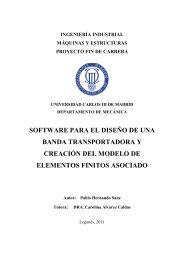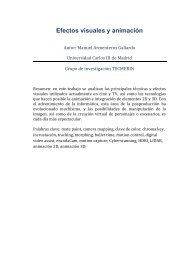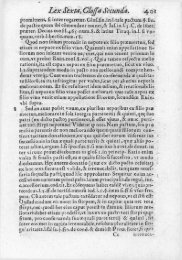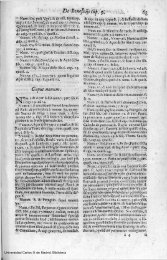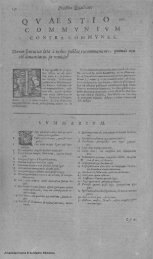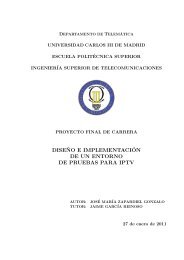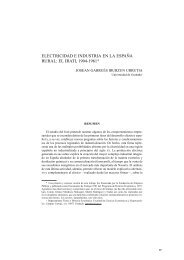Land tenure inequality, harvests, and rural conflict ... - e-Archivo
Land tenure inequality, harvests, and rural conflict ... - e-Archivo
Land tenure inequality, harvests, and rural conflict ... - e-Archivo
Create successful ePaper yourself
Turn your PDF publications into a flip-book with our unique Google optimized e-Paper software.
disillusion (…) among the l<strong>and</strong>less poor <strong>and</strong> unemployed of the <strong>rural</strong> south<br />
exasperated by the durability of the old relations of power (Graham, 2005: 14).<br />
Similarly, Stanley Payne argued that in the spring of 1934, “the most active role in<br />
labor affairs was taken by the UGT’s farmworker federation, the FNTT, centered in<br />
Extremadura <strong>and</strong> Andalusia.” FNTT strength was explained by the fact that “whereas<br />
conditions for urban workers had deteriorated only slightly, there was a growing sense<br />
of desperation among <strong>rural</strong> laborers, who had suffered an increase in more than 50 per<br />
cent in unemployment during the past two years”(Payne, 2006: 60-61).<br />
Some have argued unemployment responded to mechanization <strong>and</strong> the<br />
intensification of production methods, but James Simpson’s calculations showed<br />
labor supply did not outstrip labor dem<strong>and</strong> in Andalusia in the period 1886-1935,<br />
especially because agricultural l<strong>and</strong> increased faster than population in the period <strong>and</strong><br />
mechanization was slow (Simpson, 1992: 16). But Carmona <strong>and</strong> Simpson (2003)<br />
focused on changes in the dem<strong>and</strong> for different types of workers with agrarian<br />
development in the early 20 th century, with (slow) mechanization <strong>and</strong> output<br />
expansion favoring workers with permanent contracts, tenants, <strong>and</strong> the gangs of<br />
temporary migrants at the expense of the local pool of casual laborers (Carmona <strong>and</strong><br />
Simpson, 2003: 112-13). In addition, short run changes in labor dem<strong>and</strong> were perhaps<br />
more important. The casual proletariat did not have ways of diversifying away the<br />
risk of poor <strong>harvests</strong> <strong>and</strong> struggled with seasonal income variation (Brenan, 2008:<br />
120). If the harvest was poor, labor dem<strong>and</strong> fell <strong>and</strong> greater underemployment or<br />
unemployment followed. Unemployed laborers did not have access to financial<br />
services to smooth income shocks <strong>and</strong> there were more restrictions to temporary<br />
migrations in the 1930s (Domenech, 2013).<br />
7




